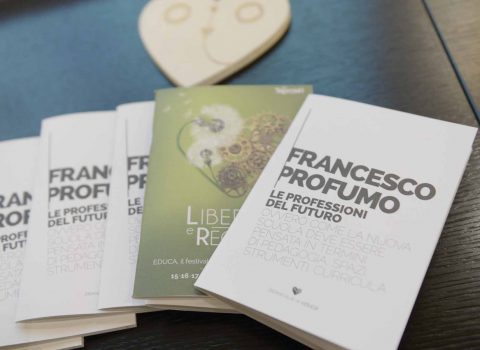
Dear friend… I am not writing to you
The unsustainable side of email and modern ways of communication and digital connection.
Although the Covid-19 pandemic has opened our eyes to the importance of global prevention and the fact that the next threat to humanity is climate change, we are still struggling to understand the real proportions of the impact this could have on our lives.
The climate congresses end with mild and uncertain promises of intervention and we often see a rebound in responsibility for who is most to blame for the state of our planet, now the textile industry, now the transport industry, now the West, now China. Individuals often delegate to governments measures and actions to be taken, arguing that without precise rules coming from above little is left to the personal initiative of citizens, not even trying, for the moment, to make one less purchase on Amazon or to bring a reusable water bottle to the office. Governments, on the other hand, are bogged down in endless bureaucracies and economic interests that are difficult to ignore.
In any case, everyone, more or less consciously, has now clear that preferring the car to public transport, compulsively buying on the Internet, opting for disposable items instead of reusable ones is highly polluting. They are tangible things, you just have to look at the garbage bin after opening the last parcel delivered by the courier or unwrapping a pack of tomatoes packed in plastic to realize it. But there are other actions, apparently harmless and often unknown even to the most virtuous ones, that contribute to the emission of CO2: sending emails and, more generally, using search engines, instant messaging apps, social media and online streaming in a prolific and reckless way.
The messages we send daily are not visible, they disappear as soon as we press “send”, we do not find them in the garbage bin at home in the evening and they have neither the look nor the smell of a sooty exhaust gas, so you are legitimately led to think that they are harmless. Of a different opinion, however, is a study by Ademe, the French Agency for the Environment and Energy Management, which in the research “La face cachée du numérique” (The hidden face of digital) has attempted to investigate how much it actually pollutes, in terms of carbon dioxide, sending an email: a 1-megabyte-email releases about 19 grams of CO2, taking into account both the energy consumption of the PC and that of the servers involved in traffic. When we send an email, it is actually copied about ten times and bounced on various servers before reaching the recipient, which obviously multiplies when there are many recipients and if aliases containing several names are used.
It has been calculated that a company with 100 employees who send an average of 33 emails per day for about 220 working days a year produces approximately 13.6 tons of CO2, equivalent to 13 round trips from Paris to New York. To this must be added the social media posts, the thousands of data shared on chats, the videos we watch and even the internet searches we carry out daily, all things that are done through devices that require energy to be recharged and, first of all, manufactured.
It is now clear to us that the digital actions we perform every day, unaware, have a well-defined and not negligible ecological footprint. At the moment there is still no solid data that can tell us if it has a greater environmental impact to ask people to travel to the office or make them work from home, but with the pandemic videoconferences and the quantity of data that are inevitably used to work remotely have increased dramatically; and again, if on one hand sending a paper letter is apparently more expensive at an energy level than sending an email, on the other it must be considered that we send many more emails than we used to do with letters, and that to do so we will need more and more electronic devices that will often have to be changed, updated and recharged.
So what to do? Back to traveling pigeons, maybe? No, the alternative is much simpler: thinking before sending or, to put it in the words of the British energy supplier OVO, “Think before you thank”: according to the survey conducted by OVO it seems that there are in fact more than 64 million non-essential emails sent every day only by the Brits, or emails with only “thank you”, “ok”, “received”, “super” written in, sent also to people who don’t actually need to receive them at all.
Below you can find some simple rules, absolutely within everyone’s reach, for a more conscious and sustainable use of emails and digital communication devices:
– send only strictly necessary emails with relevant content
– do not send incomplete emails that will require subsequent communications
– send only the necessary attachments and check that they are there before clicking “send”
– when possible, organise a meeting instead of sending dozens of emails
– unsubscribe from newsletters you are no longer interested in or you don’t have the time to read
– delete unnecessary emails from your mailbox to decrease the data contained in servers
– make a conscious and sensible use of CC and aliases containing many names
With regard to this last point, it should be also considered that receiving an excessive number of emails is not sustainable not only for the environment, but also for our concentration as the continuous receipt of inputs forces us to have at least a quick glance at the communication received before permanently delete it, while running the risk of losing, amidst the load of messages delivered, those that are really important and worthy of our full attention.



